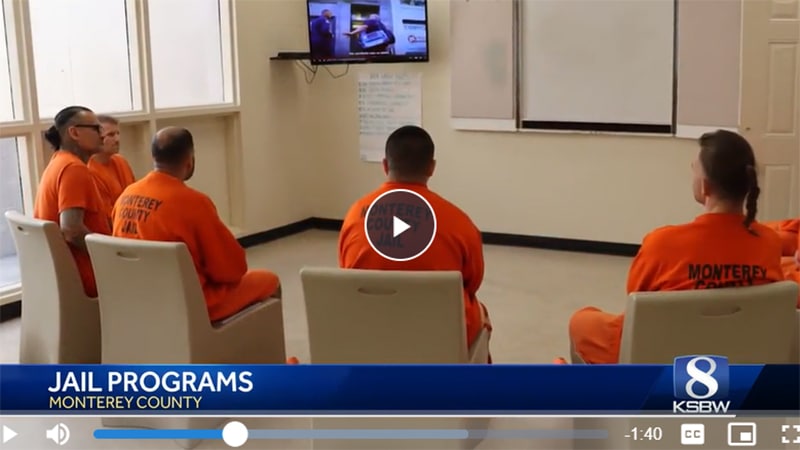
For 15 years, GEO Reentry has supported community corrections officials by operating the Monterey Day Reporting Center in Salinas, California, where more than a 100 individuals on probation and parole receive evidence-based cognitive-behavioral treatment proven to reduce recidivism, including life skills training, case management, workforce development and community connections.
Referrals to the program come from Monterey County Probation and the California Department of Corrections and Rehabilitation. Officials credit the program with helping prepare individuals for community life and staying focused on habits and behaviors that will keep them from recidivating.
Along the way, the county requested GEO Reentry begin delivering treatment services in the Monterey County Jail. The idea is to begin cognitive behavioral therapy, designed to reduce criminal risk, and prepare individuals in the jail for eventual release. Many of these individuals have substance use disorders over their lives. Once released, some of these individuals may continue treatment and training at the DRC, or they may transition to other community-based services.
A recent news story on KSBW in Salinas highlights how one individual at the Jail Reentry program described how the in-jail treatment has changed his life.
Joe R. has spent the last two decades in and out of jail. He was involved in gangs and addicted to drugs. Today, he says he is a different man, crediting enrichment programs at the jail for changing his life.
“For some of us in the county jail, a lot of people believe there is no hope. What the enrichment program has provided us is hope,” he said. “I had an issue with drug abuse. This program has basically given me back that part of my life that I lost a long time ago. I’ve been in and out of this jail since 1995 and this is the first time I’ve sat back and reflected upon the fact that I do want to change my life.”
Joe R. is part of the medication-assisted treatment program or MAT (managed by GEO Reentry). It combines the use of approved medications with therapy to treat alcohol and opioid use disorders.
“The medicated assisted treatment program is one of the programs we have had here for a little over a year, almost two years now,” said Charles DaSilva, director of programs. “People who are dealing with opioid or alcohol abuse, we get them into these programs so they can get educated on getting some help and resources available to them.”
There are also job training programs, classes to help incarcerated people get a degree and other events to help bridge the gap from jail to community. Jail officials tell us they are planning on expanding these types of programs, which offer a different view of the criminal justice system.
“It is law enforcement, and people think of law enforcement as guys just ‘get handcuffed and brought into jail.’ No, we are trying to do more than that. We are actually trying to humanize them and have them become better people when they leave here,” said DaSilva. “I think with Joe, that ‘ah-ha’ moment that he had was that someone actually cared.”
Through jail partnerships with the community, when Joe R. gets out, he says he will have the help he needs to make sure he doesn’t re-offend. “I walk out of here in four days. I have housing available. I have career opportunities. I have vocational training if I want it. I have plenty of resources, so there is no reason why I should ever come back to this jail again,” he said. “It is actually my goal that if I do come back, it is going to be in civilian clothes.”
Joe R. says he has six more units left of school. He plans to work as a substance abuse counselor.
Excerpts of this blog are from KSBW in Salinas, California
